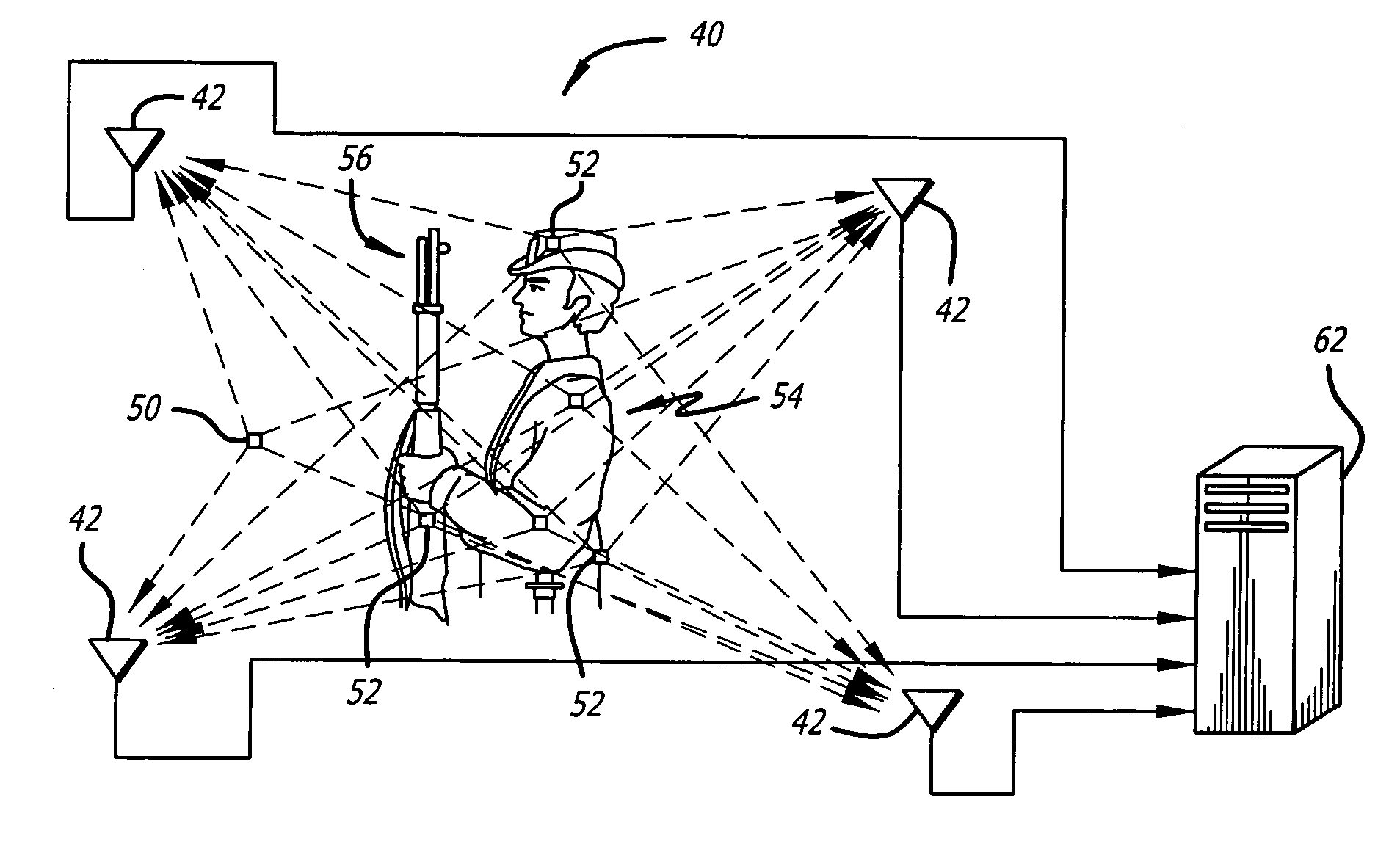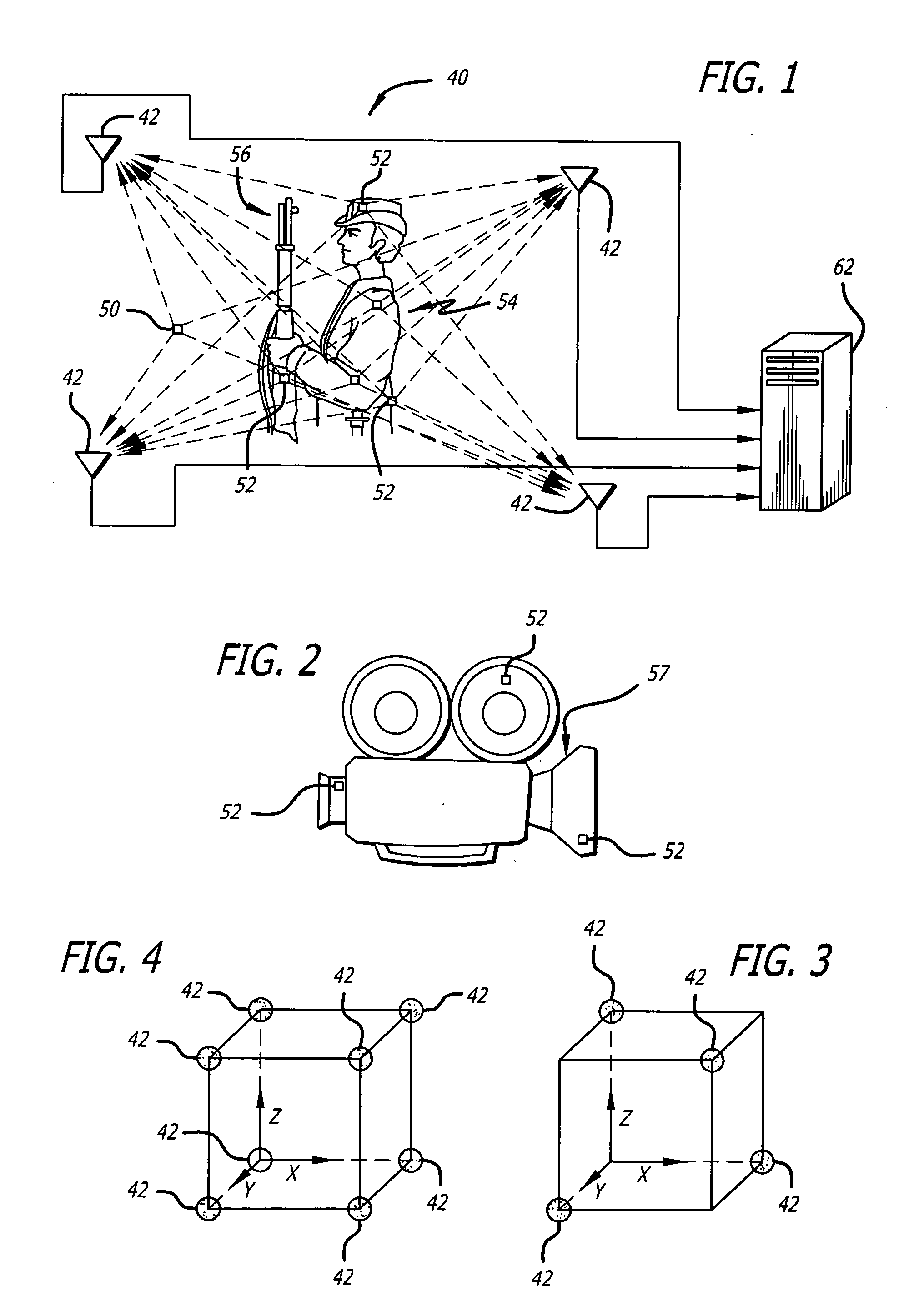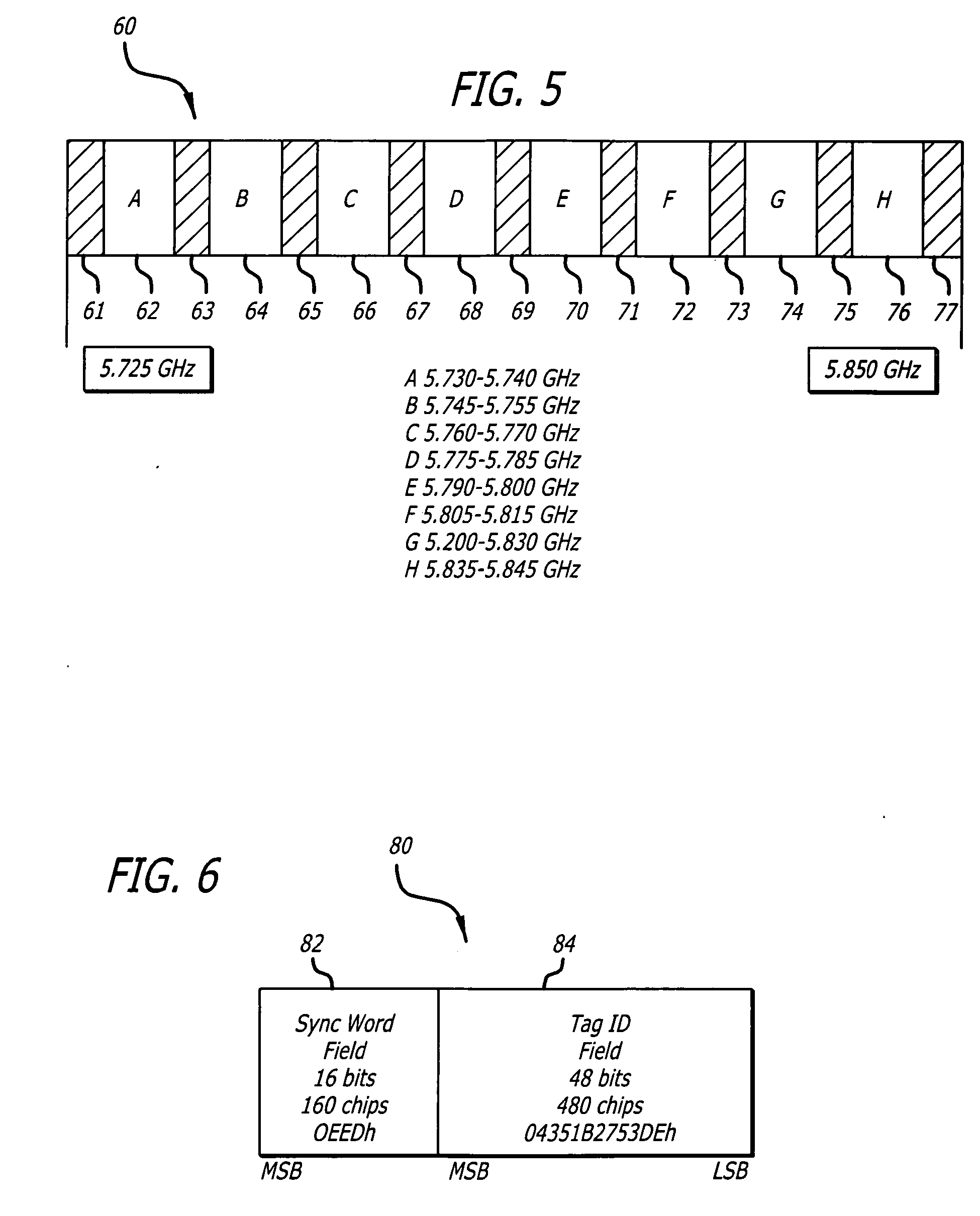Radio frequency tags for use in a motion tracking system
a radio frequency tag and motion tracking technology, applied in the field of motion capture, can solve the problems of inability to accurately identify the position of the object, the gps based system is relatively slow, and the types of applications for which the motion capture system is typically used, and the electromechanical system is often bulky and obtrusive, so as to reduce the manual correlating and manipulating of the cg image
- Summary
- Abstract
- Description
- Claims
- Application Information
AI Technical Summary
Benefits of technology
Problems solved by technology
Method used
Image
Examples
embodiment
First Exemplary System Embodiment
[0096] In a first exemplary system embodiment, tags 50 and 52 transmit direct-sequence spread-spectrum microwave signal bursts. Sensors 42 down-convert and analog-to-digital (AID) sample the received signal band. Digital samples from sensors 42 are processed to extract code pseudorange and carrier pseudorange measurements for each of the tags 50 and 52. These pseudorange measurements are processed to determine the tag positions at each sampling instant.
[0097] According to simulation results, the system is expected to operate with a capture zone of 130 m×55 m×10 m and can capture the positions of tags 52 anywhere within the zone. The minimum preferred sensor configuration is 8 sensors, one each near each of the vertices of the capture zone. Up to an additional 24 sensors placed around the periphery of the capture zone provide enhanced performance. Sensors 42 are setback such that there is approximately 5 to 15 meters between the front of a sensor and...
second system embodiment
[0202] A second system embodiment is similar to the first system embodiment, but uses some different techniques. The second system embodiment has generally been determined to be slightly preferred over the first system embodiment and is therefore considered to be a second generation design.
[0203] The capture zone is a rectangular parallelepiped with maximum diagonal up to 150 meters. The system captures tag positions anywhere within this capture zone. The system operates with any number of sensors 42 from 4 to 32. The sensors are placed such that the distance between the front of a sensor and the capture zone is between 5 percent and 15 percent of the maximum diagonal of the capture zone.
[0204] The buffer zone for each sensor is the volume defined by a plane tangent to the capture zone at its closest point to that sensor and a parallel plane twice the setback distance of that sensor away from the capture zone. Tags are excluded from the buffer zone. The system is capable of captur...
PUM
 Login to View More
Login to View More Abstract
Description
Claims
Application Information
 Login to View More
Login to View More - R&D
- Intellectual Property
- Life Sciences
- Materials
- Tech Scout
- Unparalleled Data Quality
- Higher Quality Content
- 60% Fewer Hallucinations
Browse by: Latest US Patents, China's latest patents, Technical Efficacy Thesaurus, Application Domain, Technology Topic, Popular Technical Reports.
© 2025 PatSnap. All rights reserved.Legal|Privacy policy|Modern Slavery Act Transparency Statement|Sitemap|About US| Contact US: help@patsnap.com



